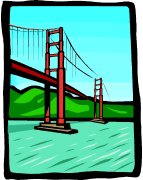
Worksheets and No Prep Teaching Resources
Reading Comprehension Worksheets
Geography

Geography
 Worksheets and No Prep Teaching Resources Reading Comprehension Worksheets Geography |
 Geography |
| edHelper's suggested reading level: | grade 6 | |
| Flesch-Kincaid grade level: | 8.3 |
|
Mapping our Geosphere
By Trista L. Pollard |

|
 1 There is more to our planet than continents, oceans, and atmosphere. There are also patterns, processes, and relationships that make Earth unique. To understand all three of these areas, you need a geographer. Geographers have the tools to map our geosphere.
1 There is more to our planet than continents, oceans, and atmosphere. There are also patterns, processes, and relationships that make Earth unique. To understand all three of these areas, you need a geographer. Geographers have the tools to map our geosphere. |
Create Weekly Reading Books
Prepare for an entire week at once! |
| Leave your feedback on Mapping our Geosphere (use this link if you found an error in the story) |
 |
Geography
|